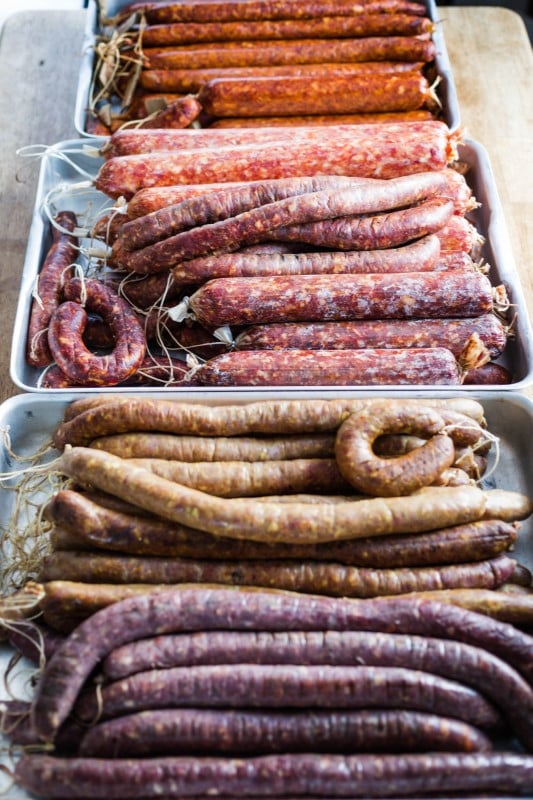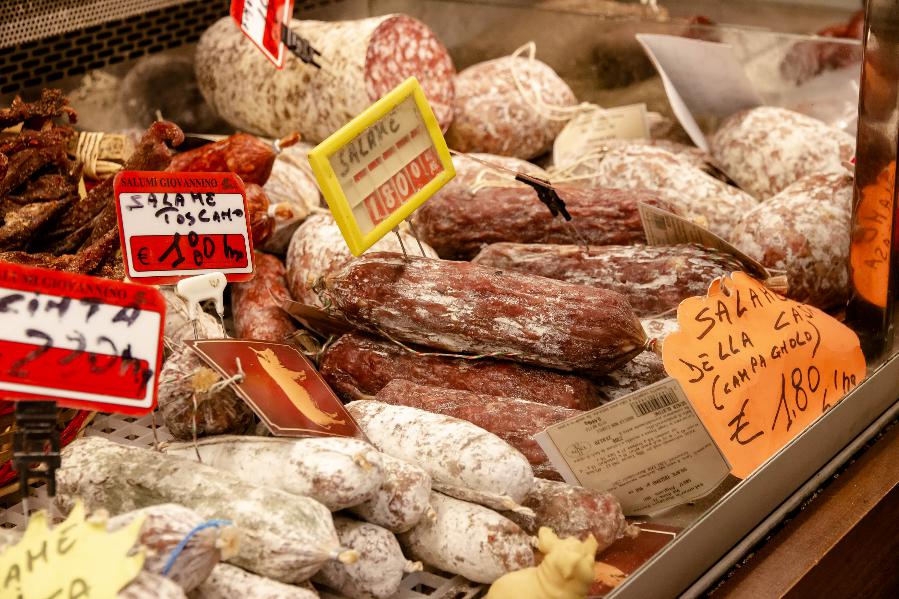When it comes to being Keto-friendly, I wanted to discuss whether salami falls into that category.
Now, since I make, teach, and have studied salami for a few decades, I thought I would write a helpful article that covers it accurately with citations.
Yes salami is keto because 2 thin slices (small to medium) of 0.2-0.4oz contained up to 0.0035 oz/0.1g
In terms of ketosis, salami is keto-friendly as per this definition:
Following a ketogenic diet is the most effective way to enter ketosis. Generally, this involves limiting carb consumption to around 20 to 50 grams per day and filling up on fats, such as meat, fish, eggs, nuts, and healthy oils (6Trusted Source).
https://www.healthline.com/nutrition/ketogenic-diet-101#ketosis
Equilivant to 0.14 oz/4 g of carbs per 3.53 oz/100g.
Salami contains salt, spices, start cultures for fermentation, meat, muscle, and fat.
However, salami can vary; traditional salami is dried.

Some salami are cooked/hot smoked. I make and study both these styles of keto-friendly salami.
Western world commercial salami is often injected with lactic acid to drop pH rapidly. Quickly acidifying the salami, therefore, produced fast and sold.
Traditional salami slowly ferments (more info on fermentation( and dries, which takes weeks or months. Producing it is more expensive, but a much more natural, keto-friendly product is produced.
Where is Salami’s Place in Keto
When dieting, no one wants to give up everything they love, and if you love salami, a keto diet could be good news for you.
What is so great about salami is its chock-full of good fats. If you find the right brand, you can overpass those greasier cuts with the occasional chewy bits of sinew and vacate to a world full of lean pieces of meat, pure fats, and textures that turn to butter as soon as they touch your tongue.
Quality salami (I wrote about different salami ideas also for pizza types) will have quality fats. As someone familiar with how salami is made knows, 15-30% of the total meat is often fat.

Keto-Friendly Types of Salami
Here is an approximation of various popular salamis and the carbs, fat, and protein that can be expected.
This is generally for dried salami that is also fermented.
| Type | Carbs 100g | Carbs 2 slices 0.2-0.4oz | Fat per 100g | Fat 3.5oz | Protein 100g | Protein 3.5oz |
|---|---|---|---|---|---|---|
| Genoa Salami | 0-4g | 0-0.01oz | 20-25g | 0.71-0.88oz | 15-18g | 0.53-0.63oz |
| Hard Salami | 0-4g | 0-0.02oz | 20-25g | 0.71-0.88oz | 15-18g | 0.53-0.63oz |
| Pepperoni | 0-23 | 0-0.04oz | 15-20g | 0.53-0.71oz | 15-20g | 0.53-0.71oz |
| Soppressata | 0-4g | 0-0.01oz | 20-25g | 0.71-0.88oz | 15-18g | 0.53-0.63oz |
| Chorizo | 0-2g | 0-0.04oz | 20-25g | 0.71-0.88oz | 15-18g | 0.53-0.63oz |
| Saucisson Sec | 0-4g | 0-0.01oz | 20-25g | 0.71-0.88oz | 15-18g | 0.53-0.63oz |
| Felino Salami | 0-4g | 0-0.01oz | 20-25g | 0.71-0.88oz | 15-18g | 0.53-0.63oz |
Nutritional values may vary between different brands and recipes. Serving sizes can also impact the overall nutritional content, so adjust according to your dietary needs.

Tom Mueller
For decades, immersed in studying, working, learning, and teaching the craft of meat curing, sharing the passion and showcasing the world of charcuterie and smoked meat. Read More
